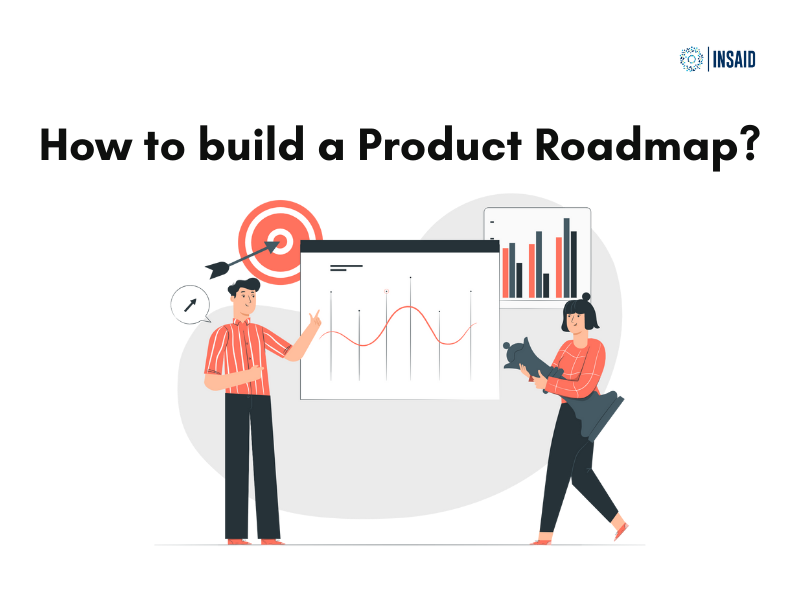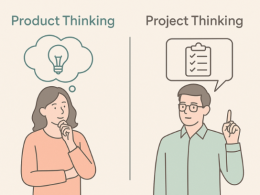For a Product Manager, it is easy to get overwhelmed with the number of tasks and responsibilities at hand. A Product Manager has to constantly engage with engineers, designers, analysts, stakeholders, and users. While juggling multiple balls at the same time, it is natural to lose track of product development.
In such situations, a Product Roadmap comes in handy. A Product Roadmap is a guiding angel for every Product Manager. It includes the plan of action for a product right from ideation to launch to post-launch activities.
Definition of a Product Roadmap
A product Roadmap is a document that includes the bigger vision, objectives, strategies, and plan of execution to successfully develop a product. A product roadmap is both a summary and a detailed description answering the WHY, HOW, and WHEN in the product development process.
A key feature of a product roadmap is that it is created by the Product Manager itself. As a result, the product roadmap reflects the vision of the company, user requirements in form of objectives, and a product manager’s plan of action in form of execution strategies.
Why You Need a Product Roadmap
If we have to state the need for a product roadmap in the simplest possible way, we’d say A Product Roadmap is a Plan for your Product. The key reasons why Product road mapping is crucial are:
- It supports conversations about your product
- Helps in implementing the product strategy
- Helps in communicating the status of your product to both internal and external stakeholders
- The plan ahead defined in the product roadmap helps individual teams to keep a check on their progress and ensure they are on the right track.
How to Build a Product Roadmap?
Building the perfect product roadmap is crucial for the successful development of a product. The entire process from ideation to product launch includes multiple stages and needs individual roadmaps.
The different types of product roadmaps include portfolio, strategy, launch, and features roadmap, While the features of each roadmap are different, the basics to keep in mind while customizing a product roadmap are the same.
4 step strategy to build an effective Product Roadmap:

1. Define the Why’s and What’s
Your product roadmap should reflect the vision of the company, the objectives behind developing the product, and the goals to be achieved through the product. Defining these why’s help aligning the different teams and stakeholders.
Keeping the short and long-term objectives in mind, define the strategy for the product. The strategy should highlight why you are creating this product, who is your customer, what you will offer through this product, and how will you achieve the same.
2. Identify and Define Your Product Features
Before moving to the development part, it is crucial to define each and every feature or requirement of your product. You can have more than one idea for each feature. Keep a record of these ideas and requirements, and shortlist them according to your objectives. This mini database of product features and requirements will give concerned teams the much-needed context and help develop the best solution.
 Pin
Pin3. Choose the Right Product Roadmap Tool
The right tool helps you create the perfect product roadmap and significantly simplify the process of product management. From spreadsheets and presentations to specialised product roadmap tools, a number of options are available for Product Managers today.
While spreadsheets and presentations are commonly used; built-in roadmap tools have gained much traction recently. Product Managers are actively using these easy-to-use and maintain tools to develop creative, compelling, and informative product roadmaps.
4. Plan Your Product Timeframe & Start Building the Roadmap
Now that you are ready with the basics, it’s time to start building your product roadmap. Before you start typing it is important to set a timeline for your product. Your stakeholders and management will require timelines of product development.
Additionally, each team will also require product timelines to avoid the last-minute hassle. For this, having a product timeframe in your roadmap is a must. It should define when each goal and sub-goal shall be completed. So, set a timeline, and start curating your product roadmap.
If you are new to Product Management, we’d advise you to consider a course. With the help of a PM certification course, you can prepare and transition successfully to a Product Manager role at your dream company.
We hope you found this article useful. If you have any Product Management related questions, connect with us via this form and we will get back to you.






